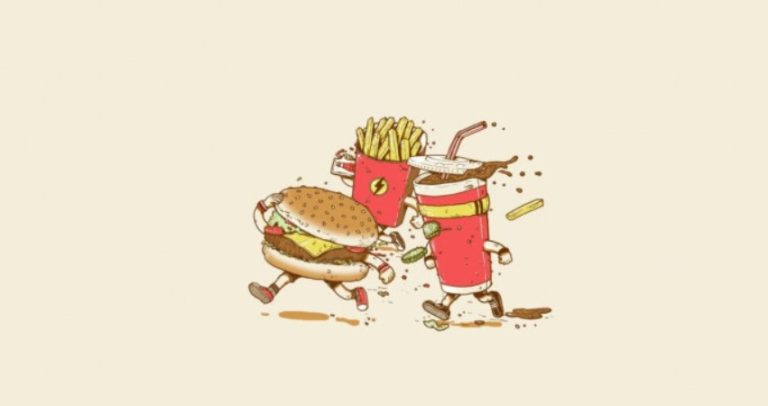Master Your Shopping with the Ultimate Grocery List: The Key to Smarter, Healthier Living

Planning your grocery shopping can sometimes feel overwhelming with countless options, unpredictable sales, and the desire to maintain a balanced diet. An ultimate grocery list transforms this experience into something efficient, cost-effective, and stress-free. By having a well-organized list tailored to your needs, you not only save precious time and money but also promote healthier eating habits and reduce food waste. In this comprehensive guide, we’ll explore everything you need to know about creating, customizing, and maintaining the ultimate grocery list for your lifestyle.
Understanding the Purpose of an Ultra-Effective Grocery List
Organizing Shopping Trips
An ultimate grocery list serves as a shopping roadmap. It helps streamline your trips by categorizing items, preventing multiple visits to the store, and ensuring you don’t forget essentials. This level of organization reduces time spent wandering aisles and optimizes your route through the store.
Ensuring Nutritional Balance
A well-crafted grocery list encourages the inclusion of a variety of foods, promoting a balanced diet. Including different food groups such as vegetables, fruits, proteins, and grains ensures you receive all necessary nutrients for optimal health.
Reducing Impulse Buys
Impulse purchases often lead to unnecessary expenses and unhealthy choices. An ultimate grocery list helps you stick to your shopping plan, avoiding those tempting, but often unplanned, foods.
Customizing Based on Dietary Needs & Preferences
Your list should reflect your unique dietary restrictions, allergies, or personal preferences. Whether you’re vegetarian, vegan, keto, or gluten-free, customizing your grocery list ensures your meals are satisfying and aligned with your health goals.
Components of the Ultimate Grocery List
Staples for the Pantry
- Grains: rice, pasta, oats, quinoa
- Canned Goods: beans, tomatoes, tuna, coconut milk
- Baking Essentials: flour, sugar, baking powder, yeast
- Cooking Oils & Condiments: olive oil, vegetable oil, soy sauce, vinegar
Stocking these essentials ensures you can whip up meals quickly without scrambling for ingredients.
Fresh Produce
- Vegetables: leafy greens, root vegetables, peppers, cucumbers
- Fruits: apples, bananas, berries, citrus
- Herbs: cilantro, parsley, basil
Fresh produce is vital for flavor, nutrients, and variety in your meals. Prioritize seasonal items for freshness and affordability.
Proteins
- Meat & Seafood: chicken, beef, pork, fish
- Plant-based Proteins: tofu, tempeh, lentils, chickpeas
- Dairy: milk, cheese, yogurt, butter
Including a range of proteins ensures diverse meals and covers all dietary preferences and needs.
Frozen Items
- Vegetables & Fruits: for convenience and long shelf life
- Convenience Foods: frozen fries, ice, pre-cut vegetables
Frozen foods are great for quick meal prep and preserving seasonal produce outside of peak seasons.
Snacks & Beverages
- Healthy Snacks: nuts, seeds, dried fruit
- Beverages: coffee, tea, juices, sparkling water
Having these on your list ensures you have nourishing options for cravings and refreshments.
Household Essentials
- Paper Products: toilet paper, paper towels
- Cleaning Supplies: multipurpose cleaner, sponges
Maintaining household necessities prevents last-minute runs to the store and keeps your home running smoothly.
Customizing Your Ultimate Grocery List
Adjusting for Dietary Restrictions
Whether gluten-free, vegetarian, vegan, keto, or any other diet, tailoring your list ensures compliance with your health needs. For instance, vegans will focus on plant-based proteins and exclude dairy and eggs, while keto adherents will prioritize low-carb items like healthy fats and meats.
Incorporating Personal Preferences & Cultural Foods
Your cultural background and taste preferences influence your shopping list. Including traditional spices, grains, or specialty items ensures your meals remain enjoyable and authentic.
Seasonal Shopping Considerations
Shopping seasonally not only saves money but also guarantees fresher produce. Adjust your list to include in-season fruits and vegetables, which often have better flavor and nutritional value.
Budget-Friendly Modifications
Focus on versatile staples, buy in bulk where possible, and look for discounts or store brands. Planning your list around weekly deals can significantly reduce your overall grocery expenses.
Tips for Efficient Grocery Shopping
Planning Meals Around the List
Create meal ideas from your ultimate grocery list to ensure all ingredients are used, minimizing waste. Batch cooking and prepping can further enhance efficiency.
Shopping with a Categorized List
Divide your list into sections such as produce, pantry, frozen, and household. This categorization speeds up shopping trips and avoids backtracking in the store.
Using Digital Apps for List Management
Apps like AnyList or Grocery IQ facilitate real-time list updates, shared shopping lists, and price comparisons, making grocery planning even more seamless.
Creating Shopping Routines
Establish regular shopping days and stick to your schedule. This consistency leads to better budgeting and reduces the chances of impulsive purchases.
Checking for Deals & Discounts
Use store flyers or apps to identify discounts on your regularly purchased items. Buying in bulk or during sales can significantly cut costs.
Sample Ultimate Grocery List Template
| Category | Items | Notes |
|---|---|---|
| Pantry Staples | rice, pasta, oats, canned beans, tomatoes, olive oil, flour, sugar | Buy in bulk for savings |
| Fresh Produce | spinach, broccoli, apples, bananas, citrus, herbs | Seasonal fruits and veggies |
| Proteins | chicken breasts, salmon, lentils, tofu | Balance meat and plant-based sources |
| Frozen Items | mixed vegetables, berries, frozen fries | Great for convenience |
| Snacks & Drinks | nuts, seeds, coffee, tea | Healthy snack options |
| Household | toilet paper, paper towels, cleaning spray | Ensure regular restocking |
You can customize this template based on your weekly or monthly needs, keeping it printable or digital for ease of use.
Maintaining & Updating Your Grocery List
Review & Refine
After every shopping trip, assess what items were used up and which could be omitted or added. This practice keeps your list aligned with your actual consumption.
Track Favorites & New Finds
Note down products you discover and love, adding them to your list to make shopping more enjoyable and nutritious.
Incorporate New Recipes & Meal Ideas
Based on seasonal ingredients or new culinary inspirations, update your ultimate grocery list to keep your meals fresh and exciting.
Conclusion
Embracing the concept of an ultimate grocery list transforms grocery shopping from a chore into an organized, productive activity. It streamlines your routine, saves money, promotes healthier eating, and reduces waste. Remember, the list should evolve with your dietary needs, preferences, and lifestyle changes. Start simple, customize thoughtfully, and watch your shopping experience become more enjoyable and efficient. With consistency and mindfulness, your ultimate grocery list will become an indispensable tool for achieving your health and budget goals.
Appendix
Popular Apps for Grocery List Management
- AnyList
- Grocery IQ
- Todoist (for task and grocery planning)
Tips for Shopping at Different Store Types
- Supermarkets: Take advantage of store layouts by planning your list around sections.
- Farmers Markets: Focus on fresh, seasonal produce and support local farmers.
- Bulk Stores: Purchase staples like grains, nuts, and spices in larger quantities for savings.
FAQs About the Ultimate Grocery List
- How often should I update my grocery list? Regularly review after each shopping trip to refine your list based on what you used and what you need.
- Can I use digital tools to manage my grocery list? Absolutely. Apps like AnyList or Grocery IQ enhance organization and sharing capabilities.
- What are essential items for a beginner’s ultimate grocery list? Staples include grains, canned goods, fresh produce, proteins, and household necessities.
- How do I customize my grocery list for special diets? Focus on specific food groups and ingredients allowed in your diet, such as plant-based proteins for vegans or low-carb options for keto.
- How can I make my grocery list more budget-friendly? Buy in bulk, look for store deals, plan meals around sales, and limit impulse purchases.
- Is it better to plan meals before shopping? Yes, it ensures all ingredients are used and reduces waste and unnecessary purchases.
- How can I ensure variety in my grocery list? Rotate recipes and include new ingredients or cuisines to keep meals interesting.
- What should be included in household essentials on my list? Toilet paper, paper towels, cleaning supplies, and laundry products are common staples.
- How does seasonality influence my grocery list? Buying seasonal foods ensures fresher, cheaper, and more flavorful ingredients.
- Can I share my grocery list with family members? Yes, especially with digital apps, making shared shopping and meal planning more straightforward.





